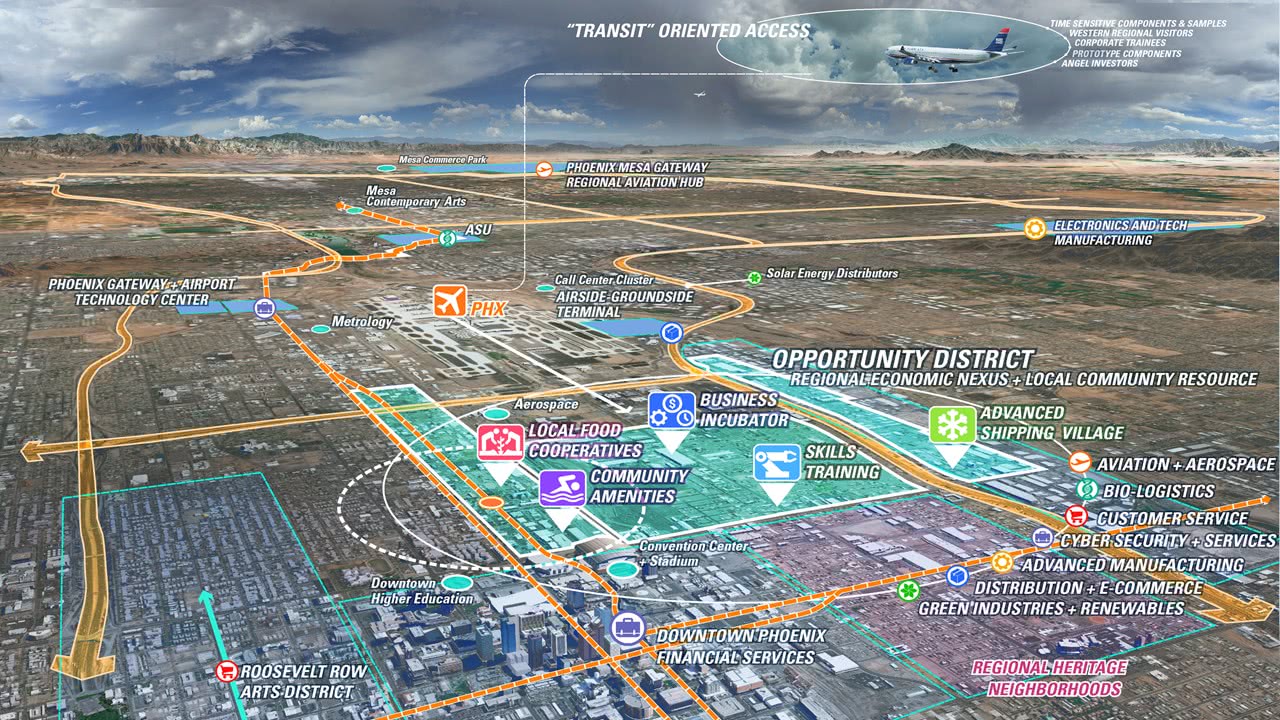
Airports and Community (Part II)
Part one of this series explored the beginnings of the evolution of airport planning and the role communities play. Part two will look at the future opportunities the airports and surrounding communities offer from an urban planner’s perspective.
The Future Requires Collaboration
The airline industry is growing quickly. According to recent estimates, the total number of passengers will almost double by 2035 — up from 3.8 billion annual passengers in 2016 to more than 7.2 billion.
Because of the projected increase in airline traffic, there are several important trends emerging:
- Hyperconnection – In the next two decades, the pressure will increase on cities to collaborate with airports to improve connectivity to and from downtown and other regional economic hubs. Transportation will be more like an ecosystem by offering diverse transit options. Also, the practice of picking up and dropping off at the airport will completely change. Served by connected shuttles, moving elevated sidewalks and tunnels linking directly to terminals, mobility hubs near the airport will more efficiently process travelers and their baggage. For short, two-to-four-hour journeys, high-speed rail will quickly connect to hub airports and offer a viable alternative.
- Productive resilience – As climate change continues to be the main focus for all land planning, airports and systems efficiency will be an area of significant innovation, especially for airports looking to brand themselves as “part of the solution.” Management systems can improve the efficiencies in maintaining airplanes, both in how they are serviced while on the ground and in their taxiing, take-off protocols and routing. Centralized systems for energy, water and waste will continue to improve. Onsite energy and food production –including using biofuels – will become a common element in airport landscapes.
- Secure and stress free – Innovations – some of which are already in place such as remote passenger and baggage check-in – will ease the huge time challenges airports face in managing security. Biometric data will monitor passengers from the moment they check in remotely via smart phones to the time they are in their seats. By the time you are at the airport, security protocols have already been confirmed multiple times to board. You will simply walk to your gate and get on the plane. What this looks like: you will only take your personal belongings with you as your smart baggage has been left at home or the office where it is securely picked up and delivered to your destination. Wellness and recreation will be just as important to the customer as security. Places to sleep, learn, recharge and have fun will be as essential to the airport experience as the planes themselves.
- Air/city partnerships – Airports are too important not to be collaborations between major institutions, developers and the community at large. Issues such as affordable housing, job training, local employment, revenue sharing and neighborhood services will build the strong partnerships that can weather constant change. “The community is an essential partner in everything we do; from the strategy related to large catalytic sites down to tiny lots,” says Kurt Nagle, CRTKL’s associate vice president, Nagle, CRTKL’s associate vice president who directs the Land Reuse Strategy for Phoenix’s Sky Harbor International Airport. “Communities have big vision and understand what is at stake.”

Most people would agree that airports are a necessity in our modern economy and modern life, and yet it’s still not very intuitive to fly, with many bottlenecks in the customer journey. Much of that has to do with the fact that we continue to design airports as exactly that – ports – and not as destinations. Managing traffic, the quality of the passenger experience and sharing the benefits of growth with the surrounding communities that serve the airport require a common vision and commitments between a multitude of interest groups, municipal governments and transportation authorities.
There are significant technological and design innovations that can transform the airport of the future. The major question facing airport planning: how can we make security, mobility, baggage and airport experiences more integrated, more interesting and more intuitive for the future?
